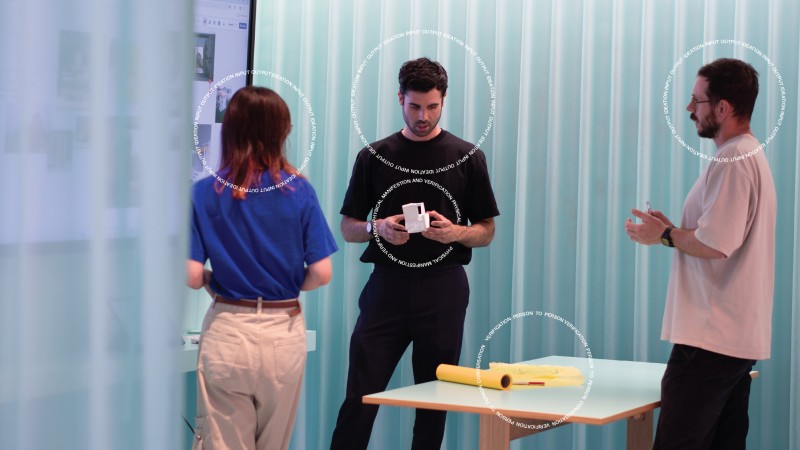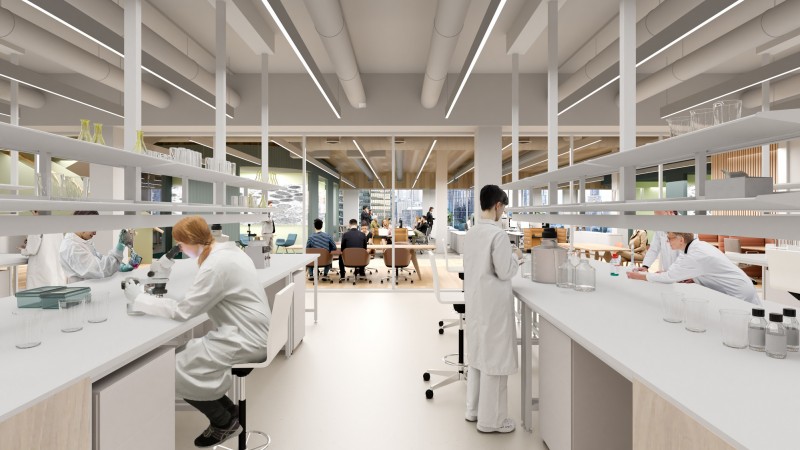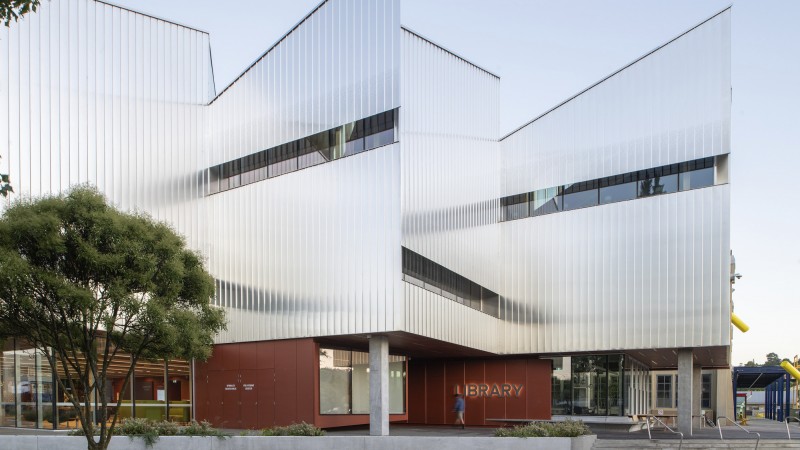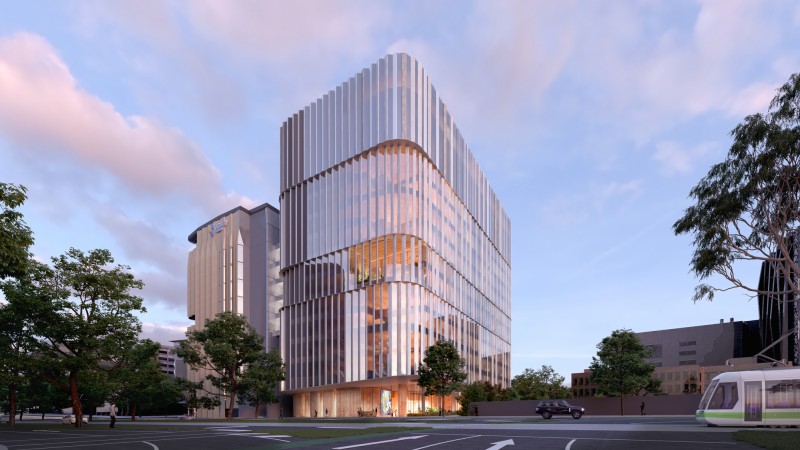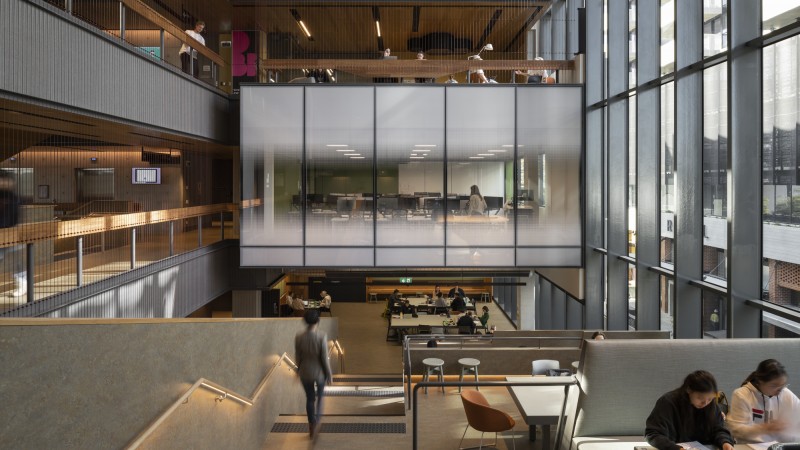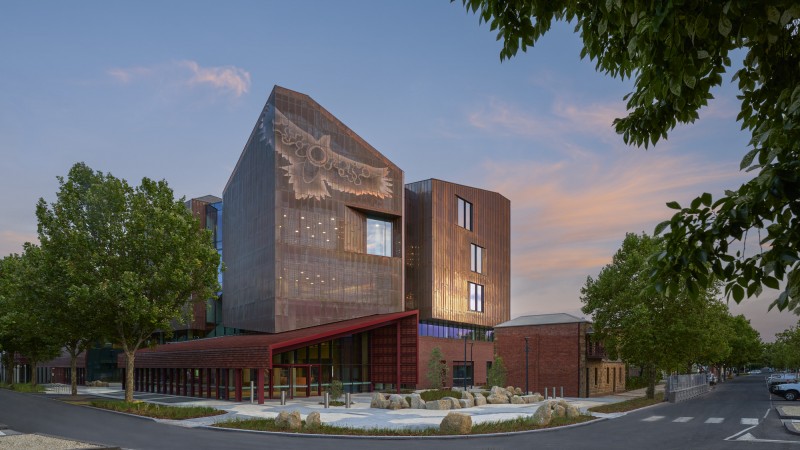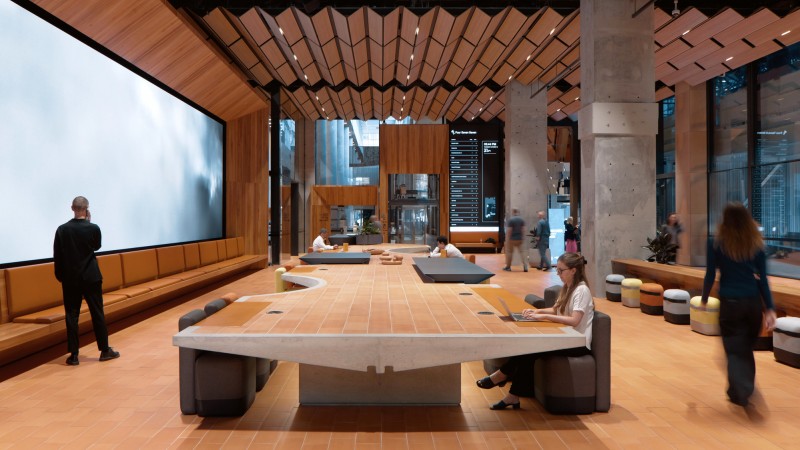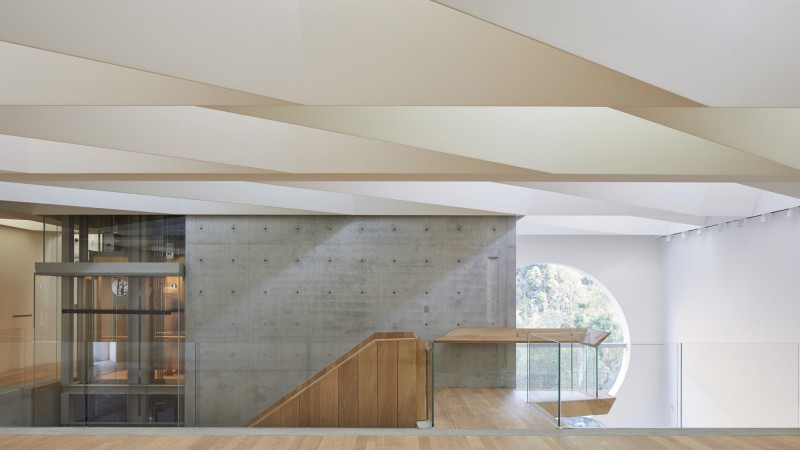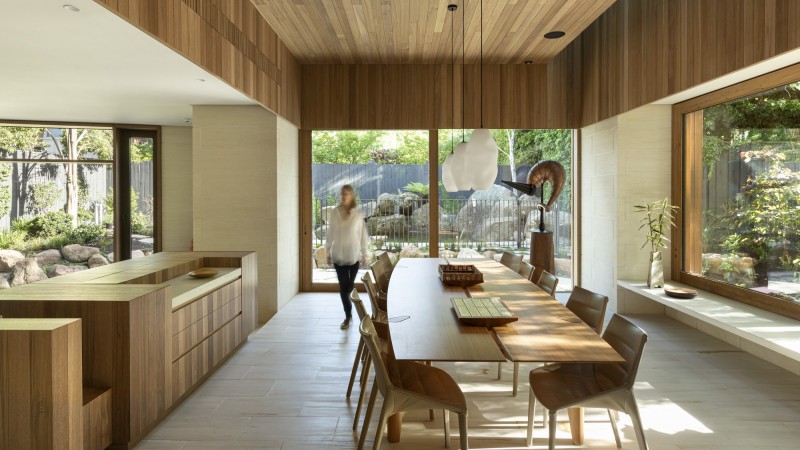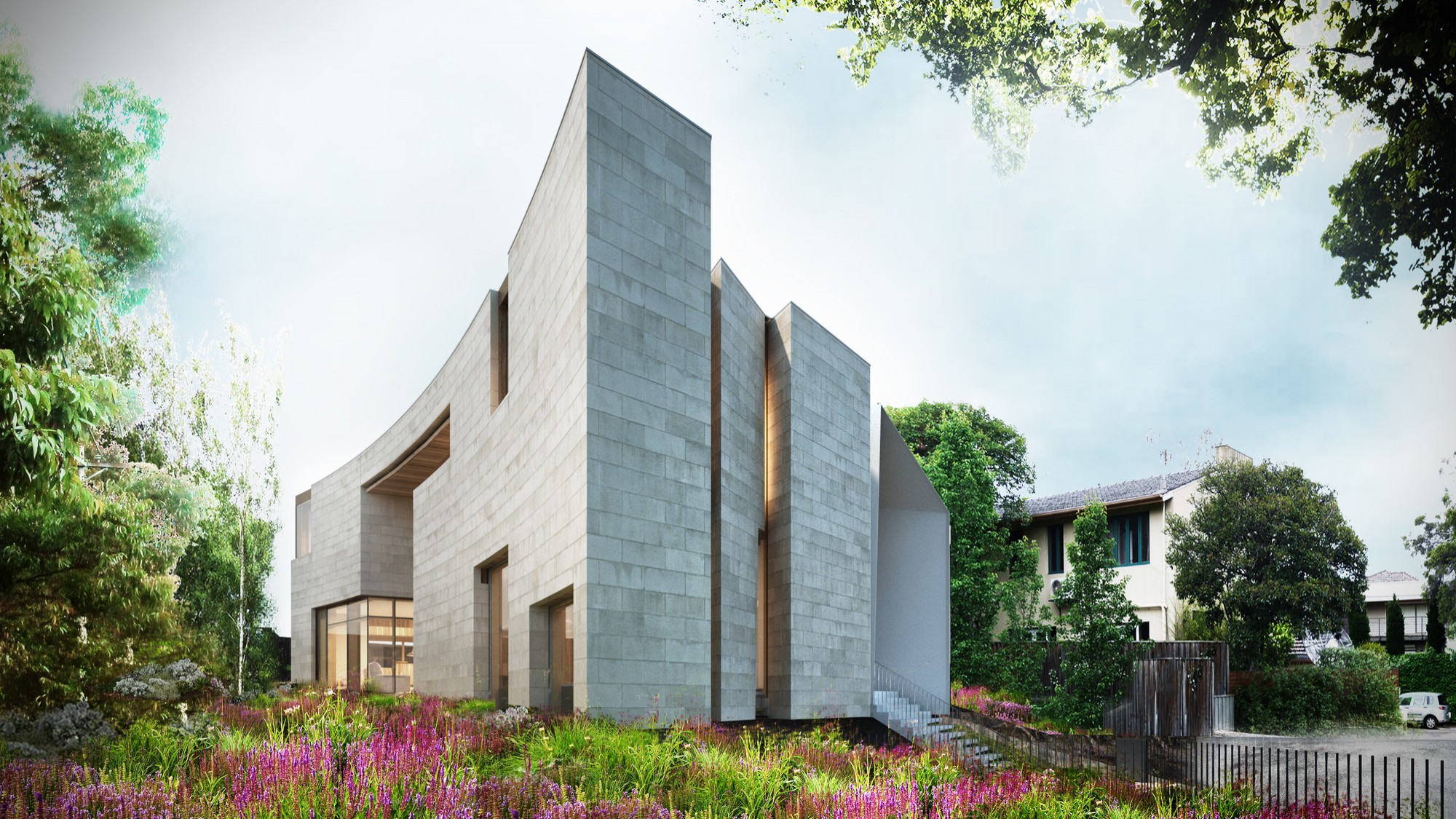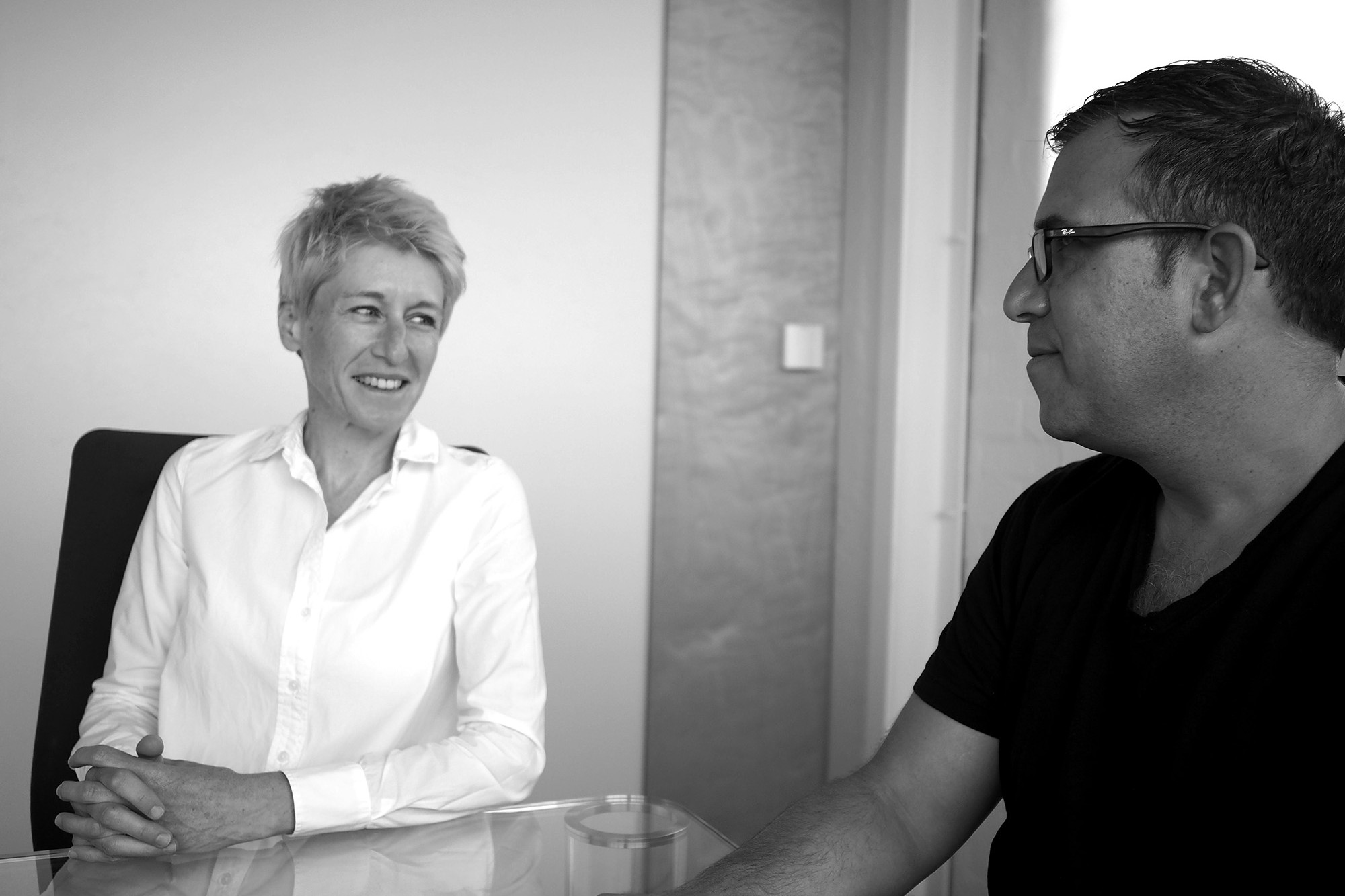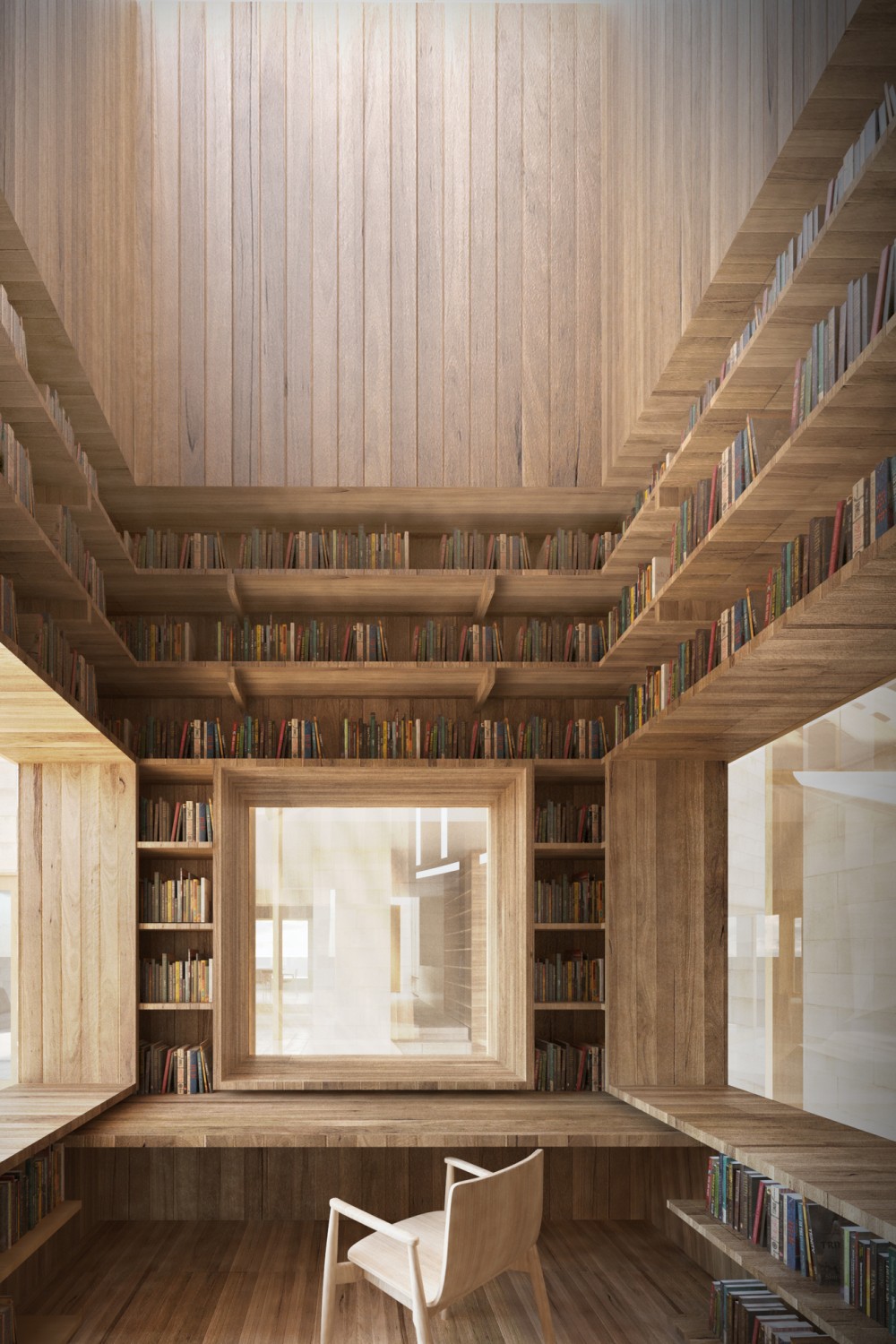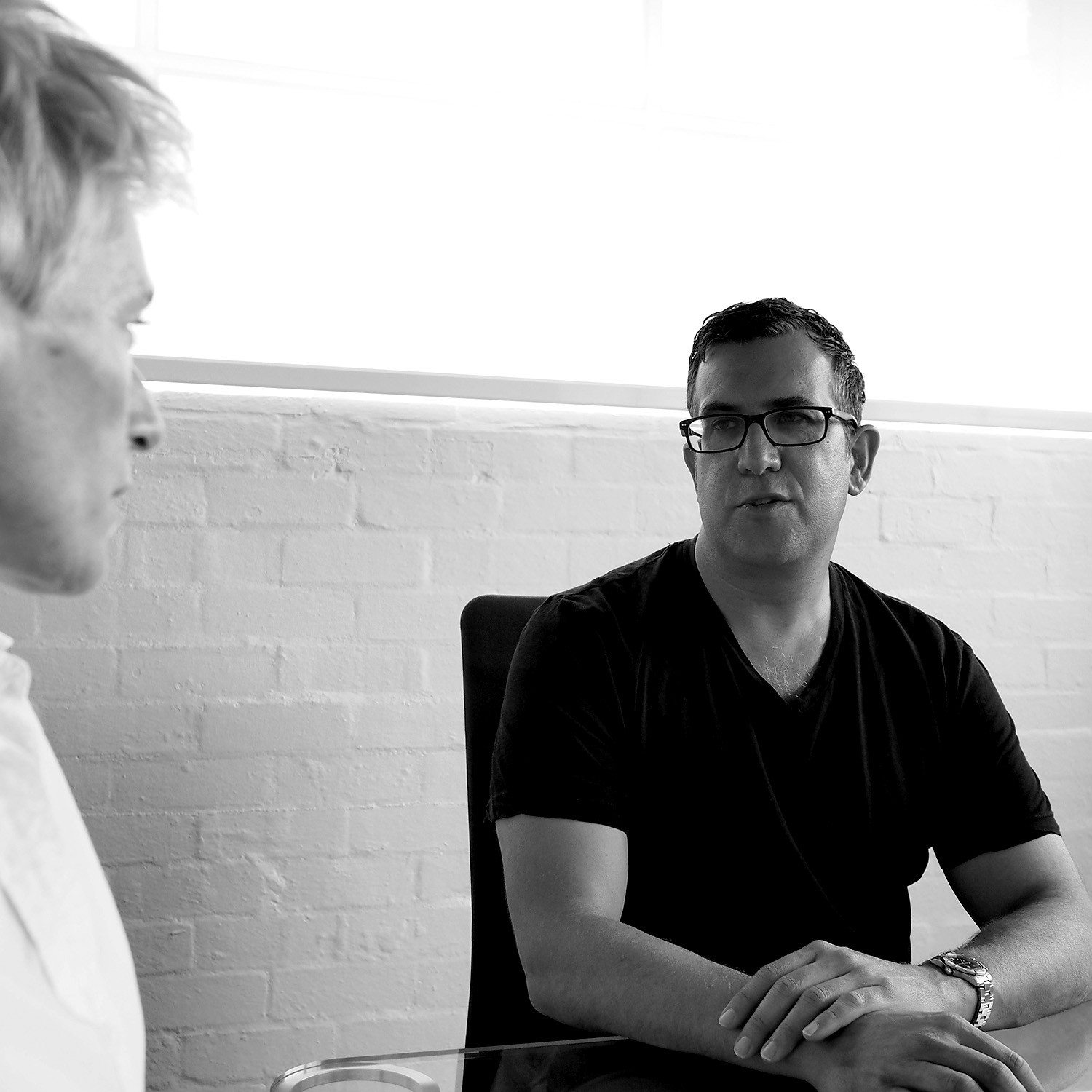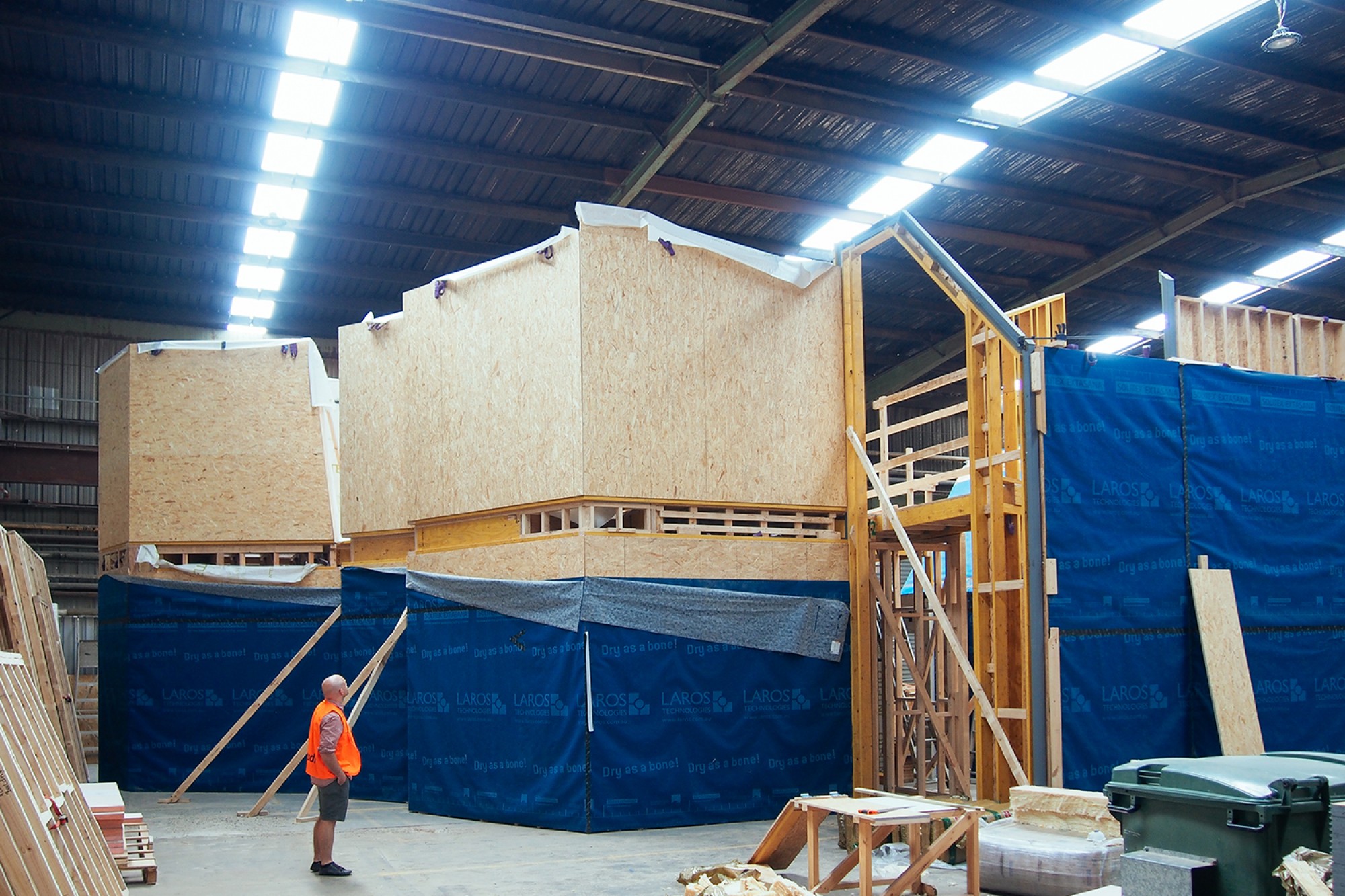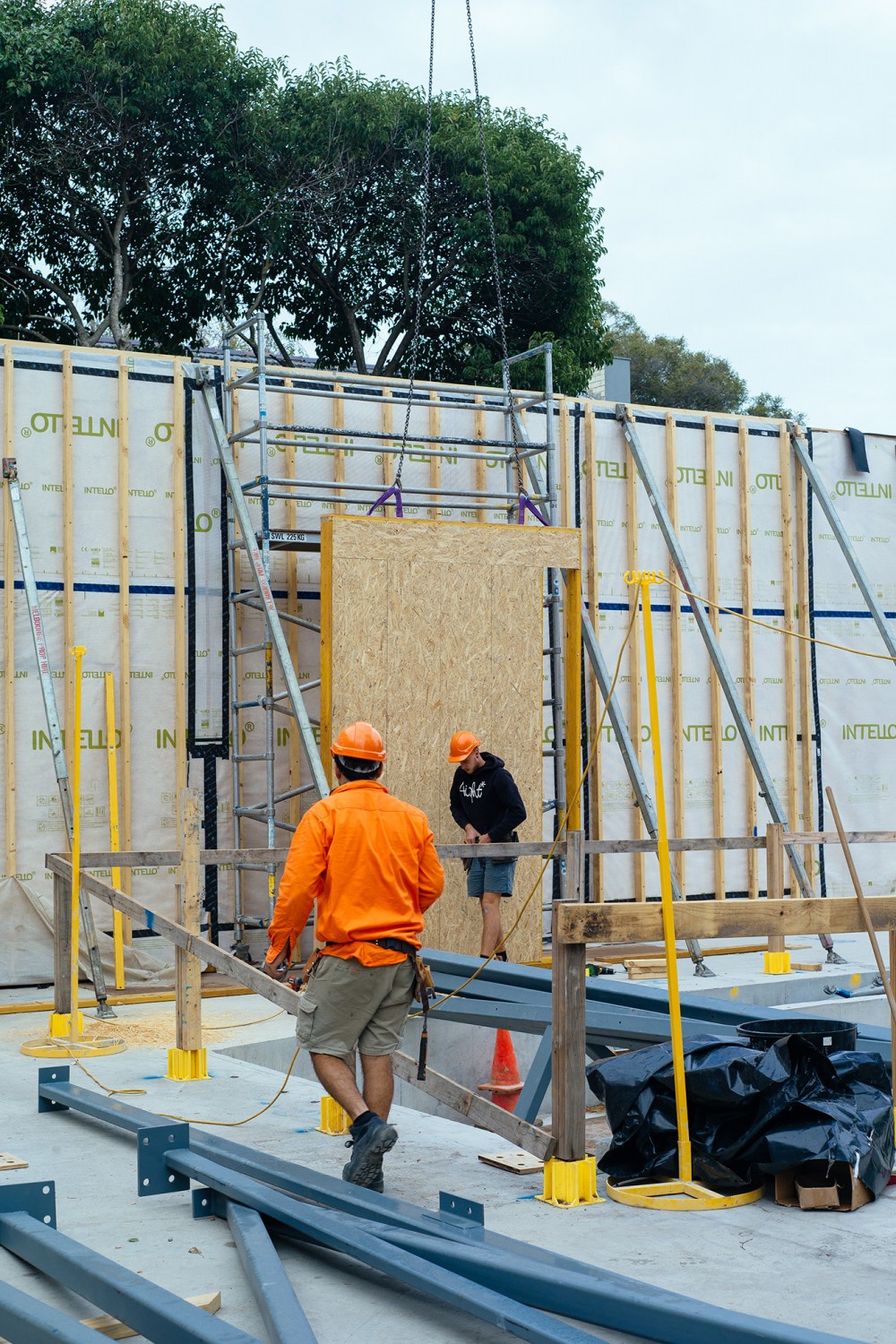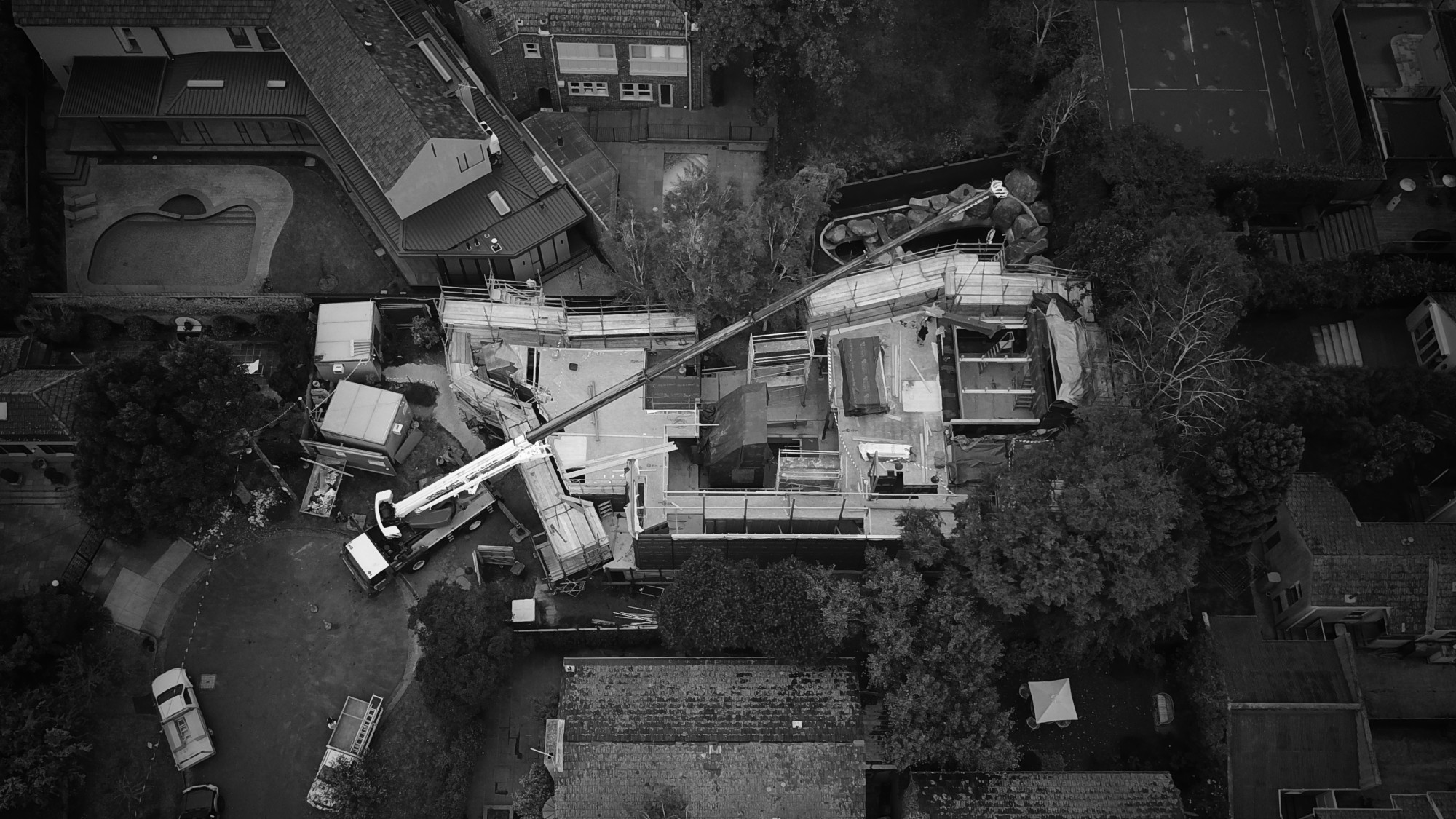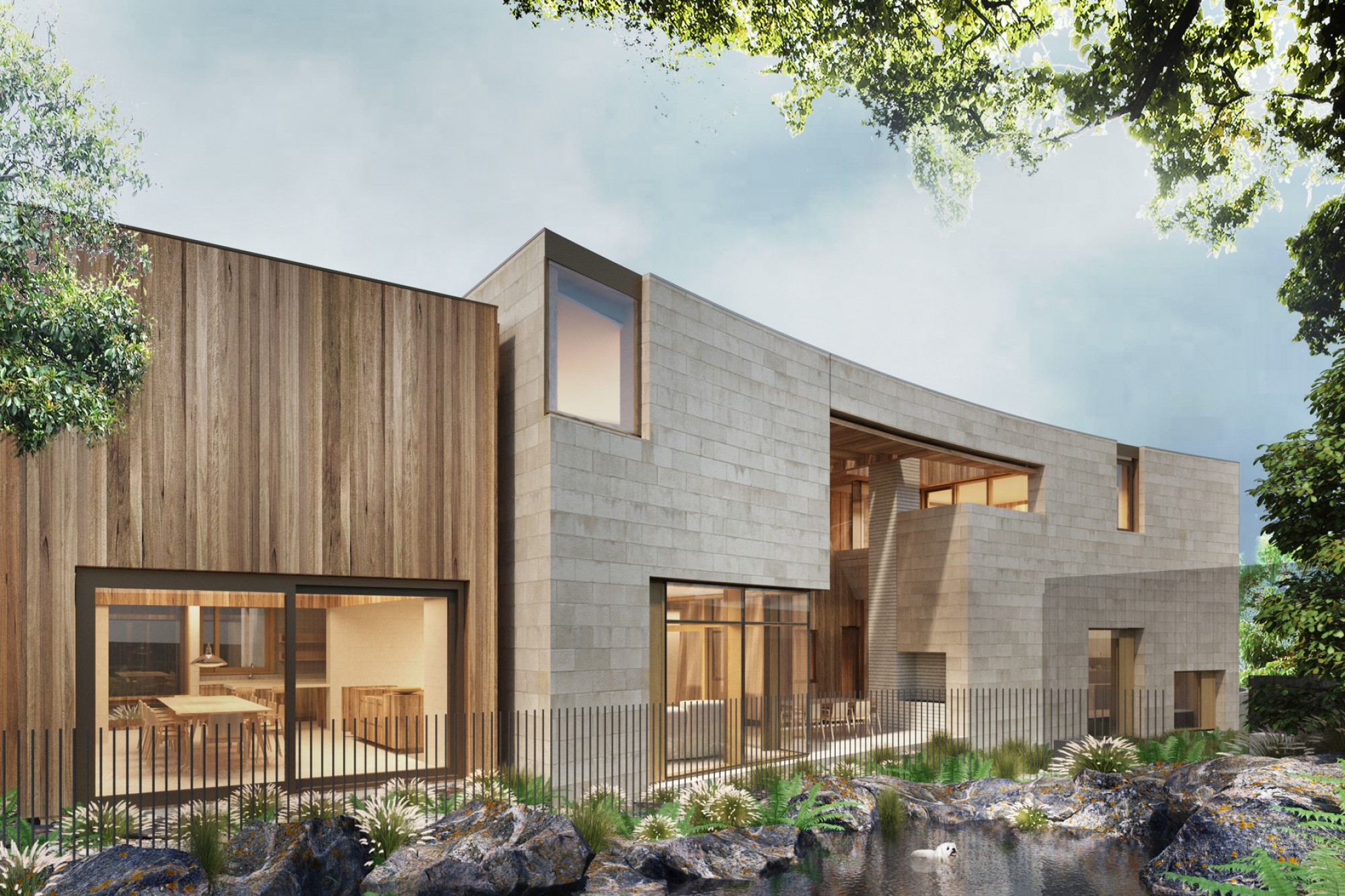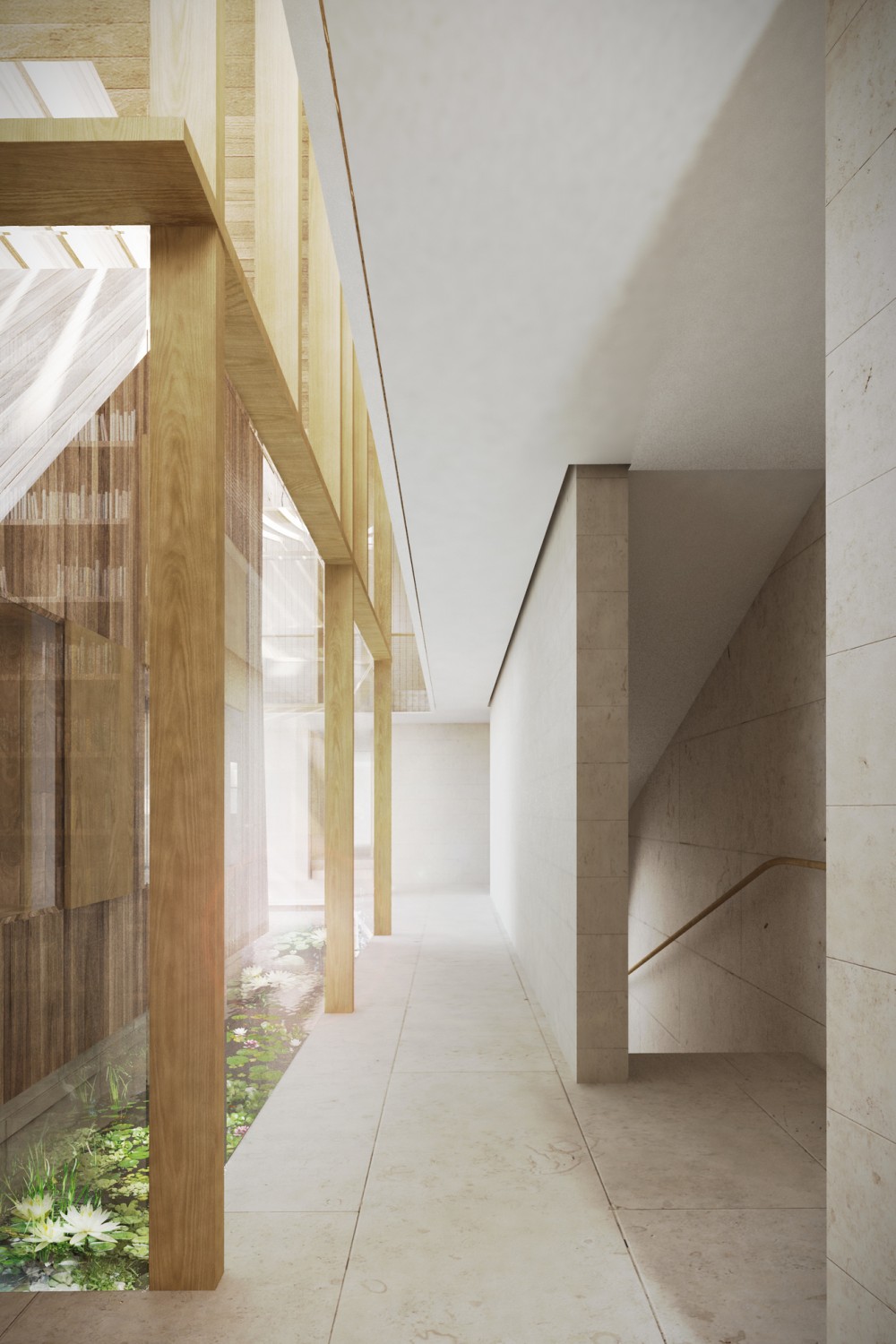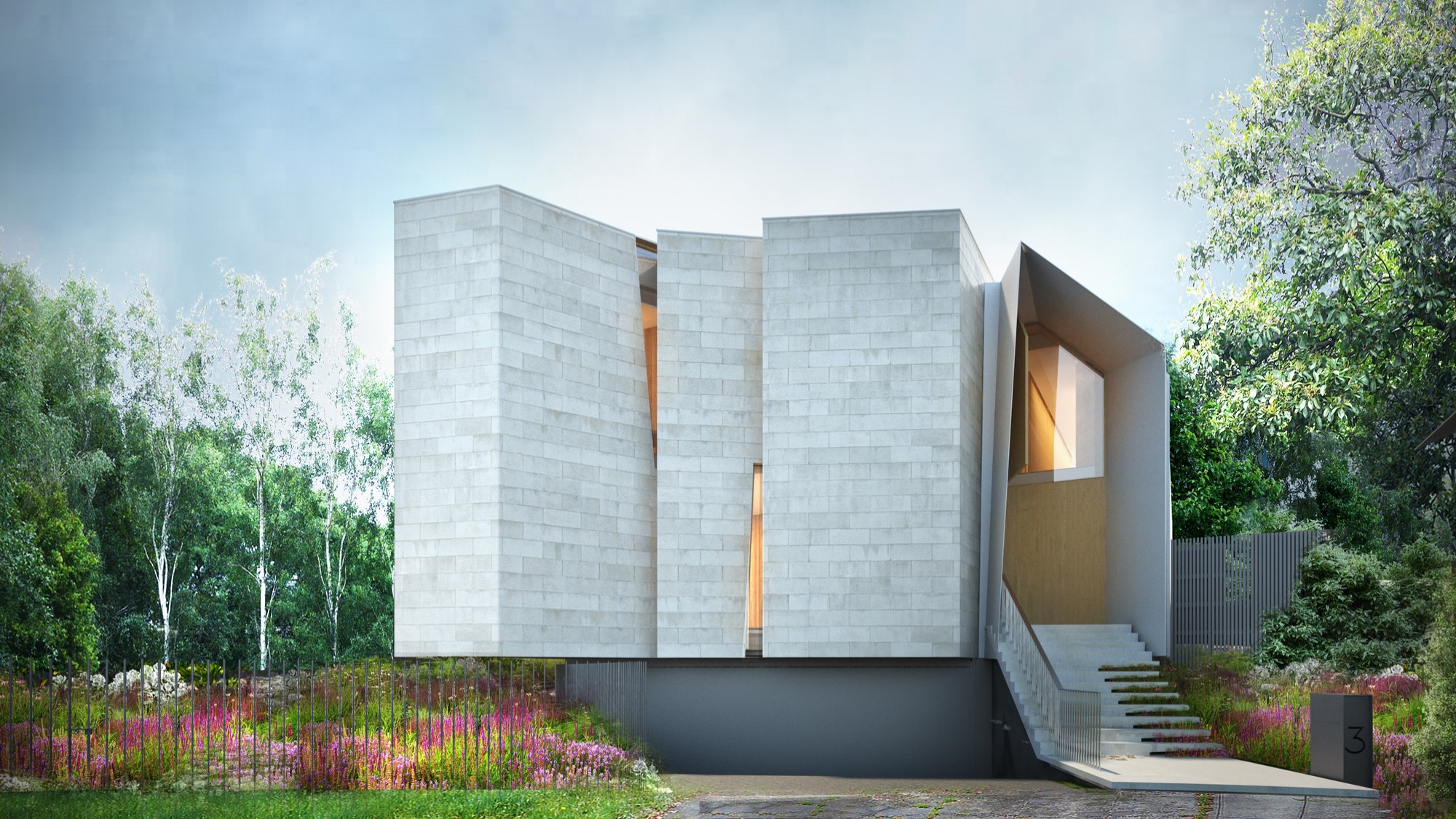Ingrid – Yes, timber was an obvious choice as it’s relatively easy to source locally in a recycled form, but the stone that we’ve ended up using has come about due to a confluence of reasons.
Diego – Yes, the site is at the end of a cul-de-sac and the bedrooms have ended up positioned to the front of the block, so privacy became a significant concern. We wanted a solid external material and Mt Gambier limestone emerged, as it’s quite an easy material to sculpt and comes from South Australia. As we started detailing the project we began to think about cutting away at this solid stone block. Suddenly it started drawing out this language of carving and how you express depth. The sustainability agenda led us to choose a material which then developed into an approach to the detailing of the building.
Ingrid – Going back to Diego’s thought about what is available in this country, we’re in a bit of a catch 22 situation at the moment because the Living Building Challenge is an American standard. The market for this in Australia is quite immature but there seems to be increasing interest in the industry about this and Passivhaus. In a short period of time, there has been a lot of sharing of information with other professionals, builders and developers.
Diego – Passivhaus, for example, requires certain membrane types and thermal components that are readily available in Europe and America but not in Australia. Then the Living Building Challenge limits the amount of those components in the project that can be sourced overseas.
Though for every challenge in the ways the two frameworks clash there’s an example of how they work together beautifully. The Living Building Challenge requires the house to generate 110% of its energy requirements. Conforming to Passivhaus we have an incredibly well-performing house that requires very minimal energy for heating and cooling so achieving the Living Building Challenge energy target is easier than you would expect.
Working in the two sustainability standards has added real depth to the project which complements the design. There are so many of these principles which we plan to implement into future houses but also see great possibility for their implementation into the other project types within the office.
